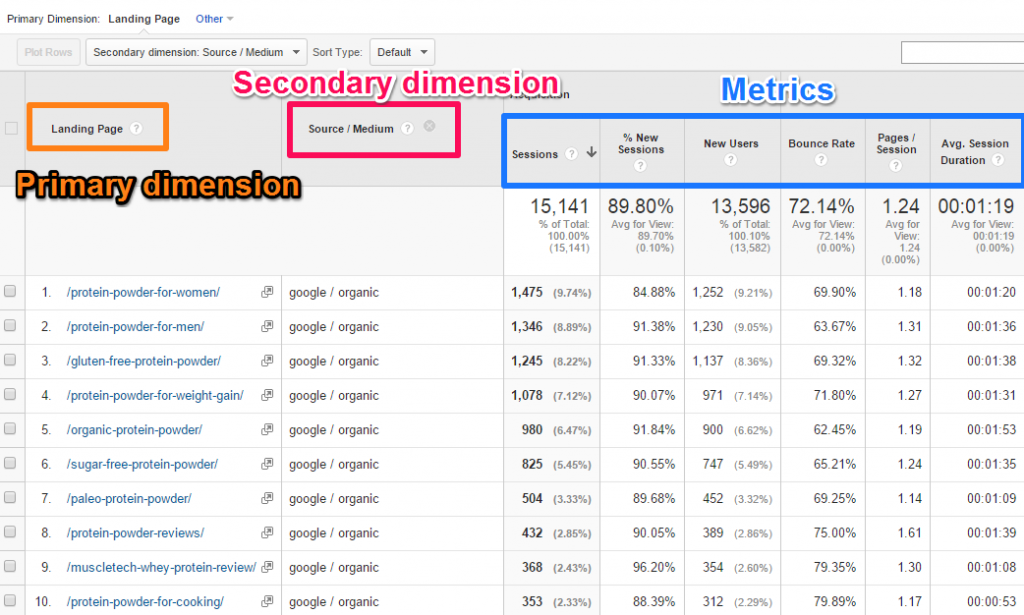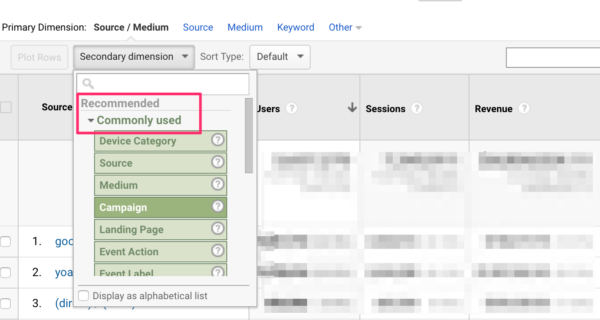Insights into the 'Secondary Dimension' in Google Analytics: An In-depth Description
Insights into the 'Secondary Dimension' in Google Analytics: An In-depth Description
Blog Article
Translating the Relevance of Second Dimension in Google Analytics: All Concerning Its Relevance and Effect
In the realm of digital analytics, the usage of additional measurements within Google Analytics offers as a critical tool for discerning deeper layers of data understandings. The value of secondary measurements exists in their ability to give a nuanced sight of user habits and communication with a site or platform.
Comprehending Additional Measurements in Google Analytics
The understanding of second dimensions in Google Analytics is important for getting much deeper understandings right into individual habits and site performance. While key measurements supply fundamental data points such as web traffic sources and web page sights, secondary measurements allow for a more nuanced evaluation by supplying extra context to these key metrics. By incorporating additional measurements, customers can segment and filter their data to discover patterns and trends that may not be right away noticeable.

Revealing the Perks of Second Dimensions
Building upon the foundational understanding of second measurements in Google Analytics, checking out the advantages they offer discloses important insights for boosting data analysis and decision-making. By integrating additional dimensions, individuals can delve much deeper into their data, obtaining an extra comprehensive sight of individual habits, content performance, and various other key metrics. One of the primary benefits is the capability to sector information, permitting for a much more granular evaluation of different measurements such as web traffic sources, gadgets, demographics, and more. This segmentation allows users to identify patterns, trends, and connections that might not be obvious when checking out data in aggregate.
Moreover, additional dimensions provide context to main data, offering extra layers of info that can assist in comprehending user interactions and preferences. This improved understanding can direct strategic decision-making, bring about more targeted advertising projects, site optimizations, and overall enhanced efficiency. In essence, second measurements function as a powerful device for unlocking much deeper understandings and making the most of the utility of Google Analytics for services and website proprietors.
Leveraging Secondary Dimensions for Boosted Insights
By taking advantage of the power of secondary dimensions in Google Analytics, organizations can discover deeper understandings that drive educated critical and decision-making optimization efforts. Leveraging additional measurements enables services to dive beyond surface-level information and get a much more thorough understanding of customer behavior, audience demographics, website traffic sources, and site performance. By integrating key her explanation dimensions like traffic sources with second measurements such as geographic location or device category, organizations can recognize which areas or gadgets visit here are driving the most valuable website traffic to their site.
Additionally, secondary measurements make it possible for services to section and examine information a lot more properly, assisting them determine patterns, patterns, and chances that might have or else gone undetected. By using additional measurements, organizations can customize their marketing techniques, web content, and individual experience to far better fulfill the demands and preferences of their target market. Essentially, leveraging additional measurements in Google Analytics empowers companies to make data-driven decisions that cause improved performance, increased ROI, and sustainable development.

Influence of Additional Measurements on Data Analysis
Enhancing data evaluation with the usage of secondary dimensions in Google Analytics gives organizations with a much deeper understanding of their online performance metrics. By integrating second measurements, such as time of day, geographic area, or device category, companies can discover useful understandings that may have been ignored with primary dimensions alone. This improved degree of granularity allows for even more precise segmentation Going Here of data, making it possible for organizations to recognize patterns, trends, and relationships that can drive strategic decision-making.

Taking Full Advantage Of Potential: Additional Capacities Strategies
One essential strategy is to integrate second measurements with key measurements to acquire an extensive sight of customer communications. Combining the main measurement of 'source/medium' with secondary measurements like 'landing page' or 'device category' can expose which networks are driving web traffic to details pages or how user habits varies throughout devices.
Additionally, making use of second measurements to sector data based on customer demographics, behavior, or innovation can help businesses customize their advertising efforts to particular audience sections. This targeted method can result in improved conversion prices, improved user experiences, and eventually, raised ROI. By optimizing the possibility of secondary dimensions in Google Analytics, companies can make enlightened decisions, enhance their on-line presence, and drive sustainable development.
Conclusion
Finally, second measurements in Google Analytics play a vital function in giving deeper insights and improving data evaluation. By utilizing secondary dimensions successfully, services can gain an extra comprehensive understanding of customer behavior and site efficiency. Incorporating secondary dimensions into information evaluation approaches can cause more informed decision-making and improved overall efficiency. It is vital for services to utilize the power of secondary measurements to maximize their prospective and accomplish better success in their online undertakings (what is a “secondary dimension” in google analytics?).
While primary measurements provide basic data points such as web traffic sources and page views, secondary dimensions allow for a more nuanced analysis by supplying added context to these primary metrics. By integrating main dimensions like traffic sources with additional dimensions such as geographic place or device group, businesses can determine which areas or gadgets are driving the most valuable traffic to their site.
By integrating secondary dimensions, such as time of day, geographic location, or device classification, services can uncover beneficial insights that may have been forgotten with primary dimensions alone. One essential approach is to integrate additional measurements with primary dimensions to acquire a comprehensive sight of individual interactions. Combining the primary dimension of 'source/medium' with additional dimensions like 'touchdown page' or 'device classification' can expose which networks are driving traffic to certain web pages or just how individual actions differs throughout gadgets.
Report this page